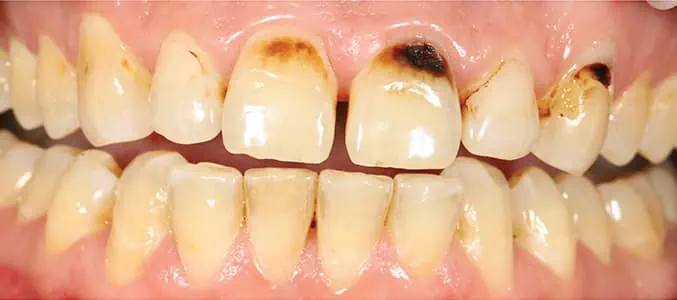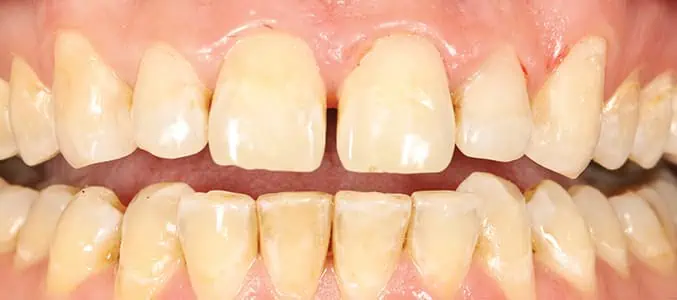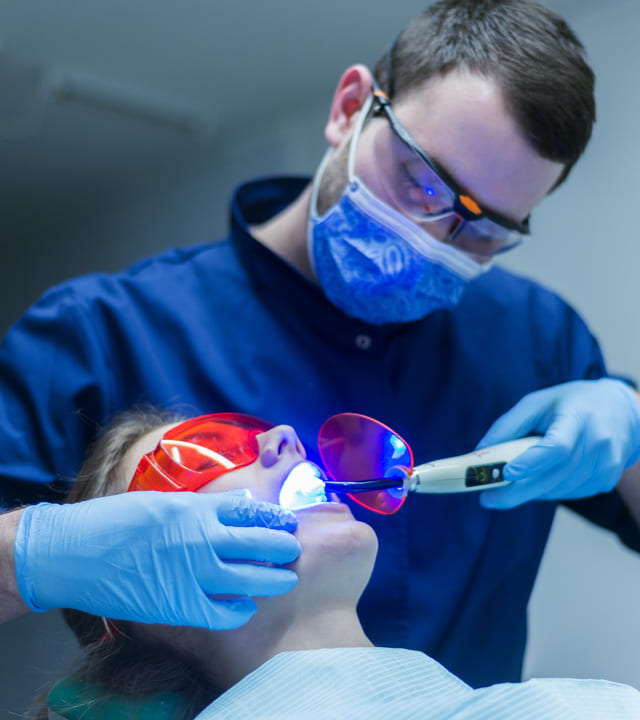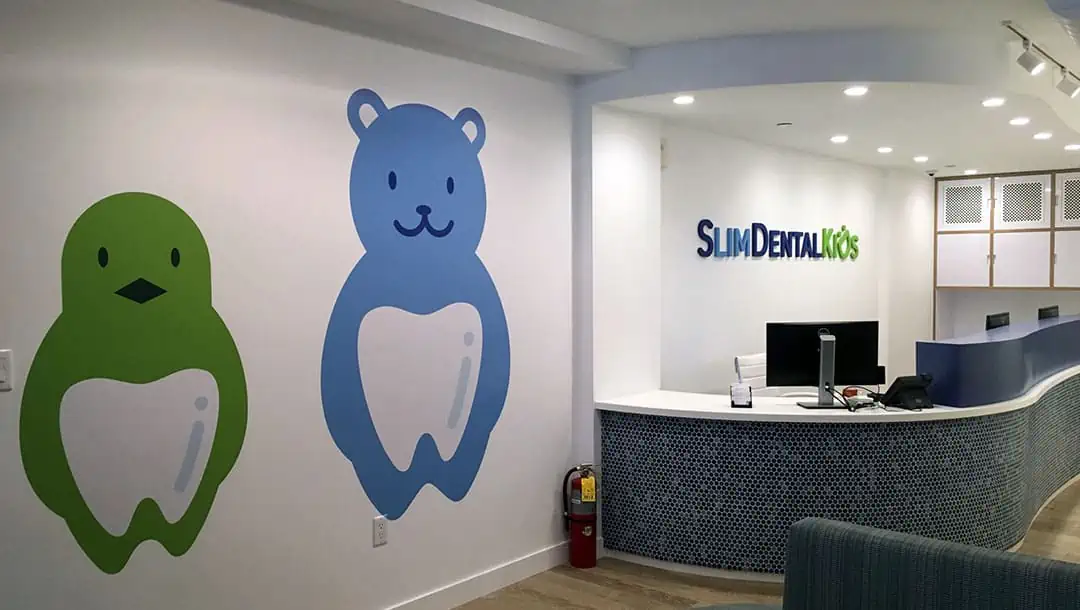GENERAL DENTISTRY
Laser Dentistry
Laser Dentistry Service in Grand Central & Rockefeller Center, NY
Laser technology allows us to treat conditions in the mouth using light energy. The laser is very selective, penetrating to a specific depth in the particular kind of tissue we want to treat. The tissue absorbs the laser light, which agitates the molecules of the tissue, causing the tissue cells to gently break apart. This very precisely treats only the desired area, while leaving healthy gums, bone, and tooth structure untouched.
The laser can be used to treat different kinds of oral tissues from soft tissues like gums to hard tissues like teeth and bone. We use lasers on soft tissues to reshape healthy gum tissues or remove diseased gums, decontaminate gum pockets that are infected with periodontal disease, and treat some sores in the mouth. Lasers are also used on hard tissues to remove tooth decay and prepare teeth for sealants, bondings, fillings, and other restorations, perform root canal therapy, reshape bone, and treat sensitive teeth.
The Benefits of Lasers
There are many benefits of lasers:
- They are much quieter than a dental drill, with no whining or vibrations.
- They are very precise, so there is minimal impact on oral tissues.
- They’re gentle and generally painless, so they often require little or no anesthesia.
- They can minimize bleeding and swelling, and speed the healing of gum tissues.
- They reduce the risk of infection by decontaminating the affected areas.
Waterlase MD
The Waterlase MD features an all-new MD laser technology platform that heralds the next generation of dentistry with superior clinical outcomes and a more pleasant patient experience for many dental procedures.
This laser technology allows us to treat conditions in the mouth using light energy. The laser is very selective, penetrating to a specific depth in the particular kind of tissue we want to treat. The tissue absorbs the laser light, which agitates the molecules of the tissue, causing the tissue cells to gently break apart. This very precisely treats only the desired area, while leaving healthy gums, bone, and tooth structure untouched.
The laser can be used to treat different kinds of oral tissues from soft tissues like gums to hard tissues like teeth and bone. We use lasers on soft tissues to reshape healthy gum tissues or remove diseased gums, decontaminate gum pockets that are infected with periodontal disease, and treat some sores in the mouth. Lasers are also used on hard tissues to remove tooth decay and prepare teeth for sealants,bondings, fillings, and other restorations, perform root canal therapy, reshape bone, and treat sensitive teeth.
With Waterlase MD, patients usually experience less bleeding, swelling and post-treatment discomfort, and require less pain medication than with more traditional treatment methods.
DIAGNOdent
Sometimes it is difficult to diagnose cavities, especially in the pits and grooves on the biting surfaces of your back teeth. The traditional way to look for cavities was by looking for visual signs of decay on the tooth, checking x-rays, or feeling for a soft area with a dental explorer. However, we use a diagnostic tool called DIAGNOdent that helps us locate even the smallest amount of decay.
DIAGNOdent is a laser technology that scans your teeth with harmless pulses of light. When a cavity is present, fluorescent light of a different wavelength bounces back to the sensor, which is translated to a digital read-out. In general, the higher the number, the greater the amount of decay in the tooth. When a cavity is present, DIAGNOdent also produces an audible signal.
Cavities Are Now More Difficult To Diagnose
The widespread use of fluoride has made finding and restoring cavities early in their development more difficult in recent years. Fluoride hardens the outer enamel layer of your teeth, which means decay has a difficult time gaining a foothold. As a result, cavities are typically smaller and can be much harder to diagnose. Before, a dental explorer would catch on the decay, or the cavity would show up on a routine x-ray. Now, however, caries on a routine x-ray can easily go undetected.
You’ll benefit from our use of DIAGNOdent because it helps us find decay that may have previously gone undetected. By diagnosing decay early in its development, we can prevent more extensive damage. Your restorations will be smaller and less costly, and you’ll be able to retain more of your natural, healthy tooth.
Before and After Dental Cases
Full Mouth Cosmetic Reconstruction
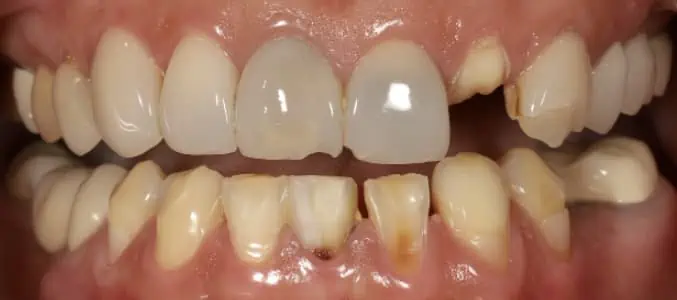
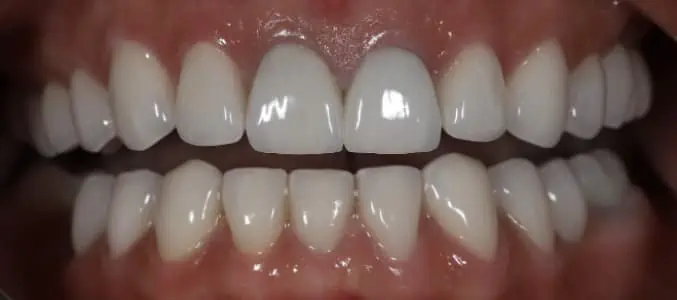
Porcelain Veneers
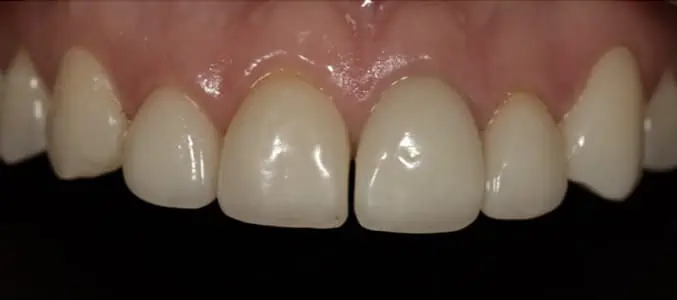
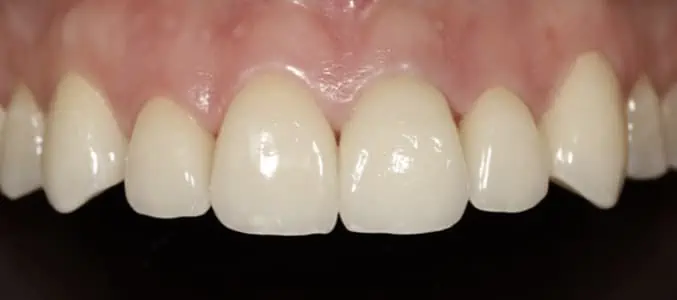
Water Laser Decay Removal
